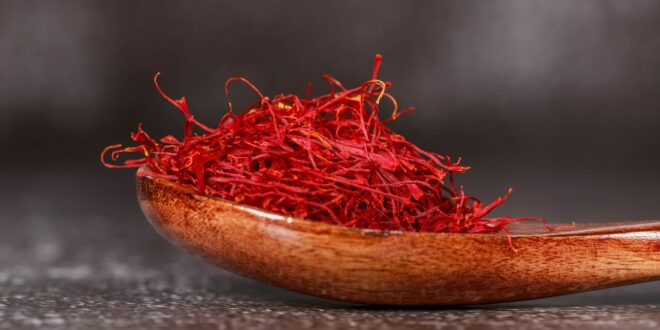Southland may be famous for its rolled oats, swedes, and cheese rolls, but anything more exotic can be difficult to find – at least, that’s how it was until recently. Now, a highly sought after, exotic spice, which can reach as much as $50 a gram, is being grown in the heart of our most southern province.
The spice is saffron, and it is farmed organically in Te Anau, and inorganically on 3 hectares of land in Garston, a small settlement on the Te Anau to Queenstown highway. So what is the plant saffron comes from, and which part of it produces expensive condiment?
 The plant
The plant
Saffron comes from Crocus sativus, a relative of our pretty spring garden crocus. It grows from a corm (similar to a bulb), and the saffron ‘threads’ (the parts which are used in cooking), are the 3 stigmas (the female reproductive parts) in the centre of the flower. These bright red-orange stigmas are as thin as cotton threads, and are even thinner once they have been dried (the Southland growers dehydrate the saffron threads before packing them for sale). It takes around 36 saffron crocuses to produce enough saffron to use in a culinary dish. Which is no doubt why it is considered one of the most expensive spices in the world!
For much of the year, saffron crocuses are dormant, which means they hunker down beneath the soil. As anyone who has ever grown regular crocuses in their garden at home knows, this means weeds readily make the crocus bed their home! Fortunately, though, crocuses rapidly multiply, and saffron crocuses are no different. In the space of just a few years, the beds becomes crowded and unproductive unless the corms are dug up and replanted, affording each a little more space. For the saffron growers of Southland, this means their production continues to grow.
The Kiwi red!
Saffron’s sought after bright colour intensifies in regions with high ultra violet (UV) light. New Zealand gets more than its fair share of UV (which is the reason sun burn is such a problem here). The further south you go in New Zealand, the higher the UV light is – which is why Southland grows such bright red saffron.
The flavour
Saffron comes in different grades and qualities. The best is often described as having a subtle earthy, sweet, ‘floral’ flavour (a term sometimes used to describe the flavour found in some wines). While turmeric is harsher in flavour, it is sometimes used as a substitute.
Cooking with saffron
Saffron is used in both savoury and sweet dishes. It pairs well with rice where it is an essential ingredient in the Iranian dish ‘tahchin’, a baked rice dish layered with the spicy threads. The Spanish wouldn’t dream of creating their famous seafood and rice dish, Paella Catalana, without saffron, and it wouldn’t be Christmas in Sweden with saffron cake.
Where can I find it?
Organic Kiwi Saffron can be purchased direct from growers by heading to their online ordering at KiwiSaffron and a wide range of stockists throughout the country.
As the popularity of saffron grows, it’s original Kiwi farmers will no doubt be looking for more folk around the country to join in the effort. Saffron doesn’t mind the cold, and doesn’t require irrigating. Perhaps it will do well in your own neck of the woods!










Join the Discussion
Type out your comment here:
You must be logged in to post a comment.